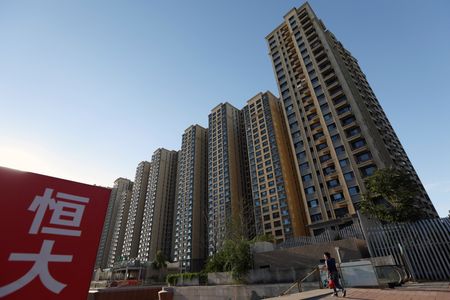By Kay Johnson and Orathai Sriring
BANGKOK (Reuters) – Thailand’s central bank will focus monetary policy efforts on shoring up sluggish growth in Southeast Asia’a second-largest economy, its chief said on Monday, even as surging global price pressures force its peers to raise interest rates.
The central bank is among a shrinking number globally that continue to see inflationary pressures as transitory, with more concern given to a collapse in foreign tourist arrivals caused by the pandemic and its long-term hit to the growth.
Governor Sethaput Suthiwartnarueput told Reuters in an interview he expects the economy to have grown 1.8% year-on-year in the first quarter of this year and that the Russia-Ukraine war would not derail the recovery.
Governor Sethaput Suthiwartnarueput told Reuters in an interview he expects the economy to have grown 1.8% year-on-year in the first quarter of this year.
“The economic recovery is still intact, slow and uneven,” he said. “Our priority now is to ensure that the recovery remains intact”.
The Bank of Thailand’s monetary policy committee last month voted unanimously to hold the key rate at an all-time low of 0.50%, where it has been since May 2020. It holds its next policy review in June.
While headline inflation, largely driven by supply side pressures, will exceed the central bank’s target range of 1-3% this year, it will likely come back to the target next year, Sethaput said.
“Long term, medium term inflation expectations still look relatively anchored in the two to three percent range,” he said, adding “we haven’t seen yields spike that sharply as a result of the higher inflation”.
Inflation hit a 13-year high of 5.73% in March, driven mostly by energy costs. The BOT last month raised its headline inflation forecast to 4.9% from 1.7% seen previously but projects inflation will then slow to 1.7% in 2023.
It lowered its 2022 economic growth forecast to 3.2% from 3.4% previously and next year’s outlook to 4.4% from 4.7%.
The Thai economy is expected to return to pre-pandemic levels in the first quarter of next year, lagging its peers in the region, Sethaput said.
“That’s because we’re very heavily reliant on tourism,” he said of a sector that normally accounts for about 12% of gross domestic product and a fifth of employment.
However, the sector’s contribution to the economy might not return to those levels until 2026, in part because of China’s COVID-19 restrictions on outbound travel.
The BOT expects 5.6 million foreign tourists this year and 19 million next year, well down on the 40 million foreign tourists in 2019, before the pandemic.
Asked about future policy tightening, Sethaput said the central bank would watch out for signs of “deviation from the expected recovery” such as second-round effects on prices and unanchored inflation expectations.
Thailand has strong buffers, with low external debt and high foreign reserves, to withstand global volatility, he added.
The Thai baht’s moves have been largely driven by global fundamentals, Sethaput said. The currency traded at a two-week low of about 33.6 per dollar on Monday.
“We don’t like excessive volatility… but if the volatility or the movements in the currency, whether the dollar or the baht, are driven by fundamentals, then we’re more accepting of those movements,” he said.
(Editing by Sam Holmes)










